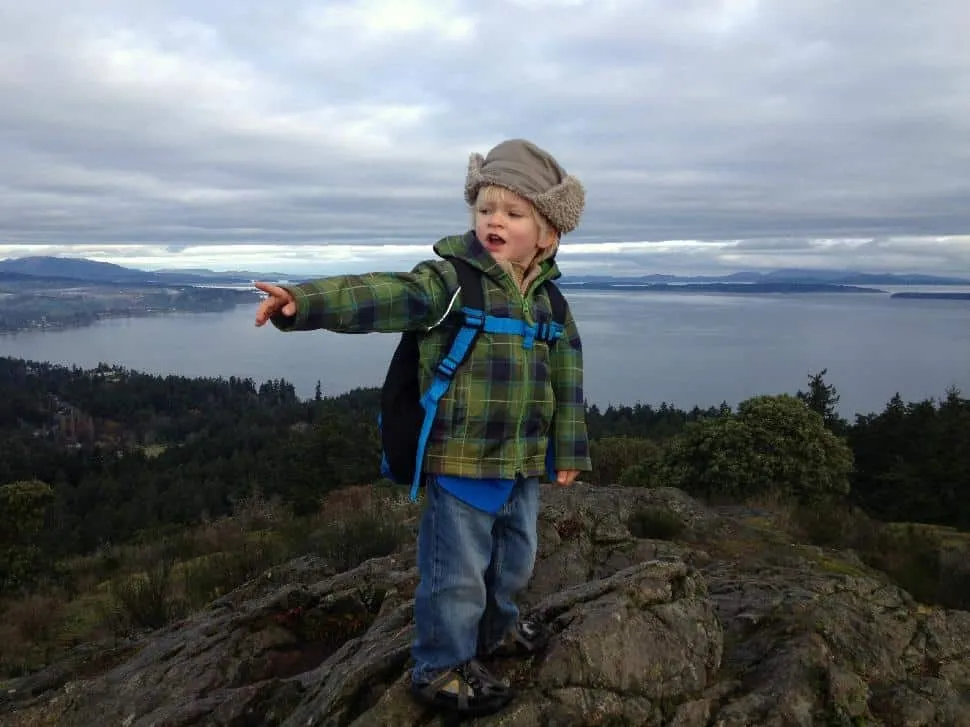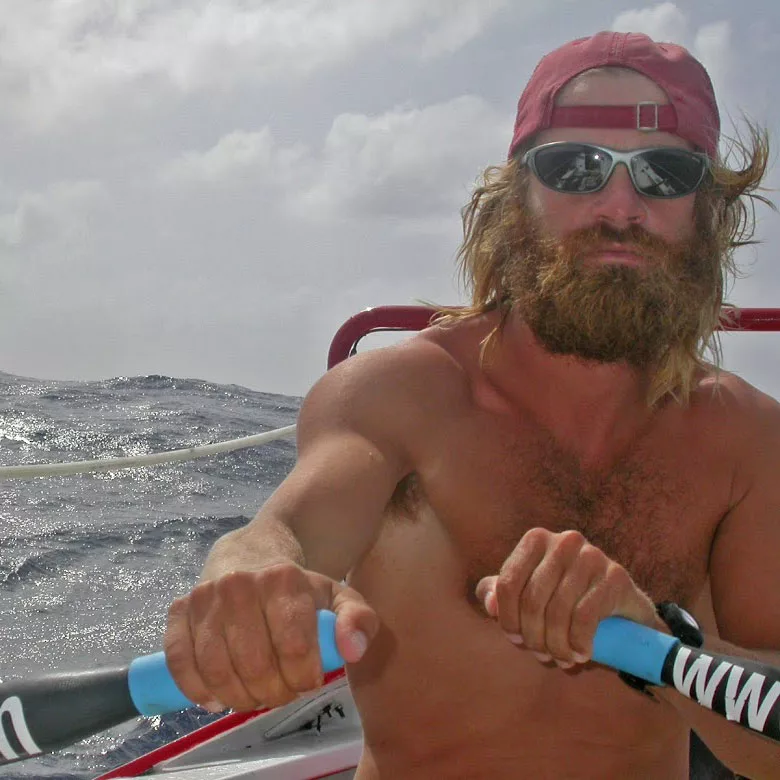Angus Adventures: The Philosophy of Baby Steps

My wife, Julie, and I frequently give keynote presentations, and one of the lessons we convey is the importance of baby steps.
When faced with a gargantuan objective, you’re less likely to be overwhelmed if you maintain focus on small, manageable tasks that add up to the whole. In other words, if you want to win a hotdog eating competition, think about swallowing the wiener currently in your mouth rather than the 114 to go. While this concept may seem cliché, I’m always surprised by how many people become overwhelmed by the largeness of otherwise manageable goals.
A few months ago, I realized that I was guilty of not heeding my own advice. It was a sunny Sunday morning, and our small family of three had left the house for a stroll.
“Carry me,” our three-year-old, Leif, pleaded, feet anchored to the ground and hands waving pitifully in the air.
We had walked all of 10 metres, and Leif was already opting for the easier route. Part of me wanted to pick him up — we could walk faster and wouldn’t have to listen to any more of his moans. On the other hand, I was aghast that our son couldn’t walk the length of the yard without complaining. What were we doing wrong?
The answer is quite simple. Like most animals, humans are hardwired to take the easier route. It makes sense when you’re living in the jungle; there’s no point wasting more precious energy than necessary. In today’s society, however, we have to fight this mindset, not just in ourselves but also in our children if we want them to become healthy, active adults. And this is where baby steps come in: clearly understanding your goal and distilling the key tasks required for getting there. Julie and I knew what our goal for Leif was, but we hadn’t spent the time creating a clear outline for getting there.
Before having a child, I was shocked by the number of older kids being wheeled around in strollers at supermarkets and shopping malls. It doesn’t take an ad campaign from ParticipAction Canada to understand that walking or running is a whole lot healthier for little tykes. At the same time, I didn’t realize that it took a great deal of strategy and resolve to ensure your kids are active. I assumed active parents meant active kids. Parents are role models after all, aren’t they? And aren’t kids inherently full of energy?
But when Leif stood on the grass, moaning to be carried, I suddenly realized that Leif’s own physical ambitions fell significantly short of my expectations. Some might argue it comes down to misplaced expectations — walking is boring for kids, after all, and you only need to worry if he’s not expending energy in bouncy castles and playgrounds. Perhaps, but no matter which way you look at it, if you need to push your five-year-old through the market in a buggy just to grab a loaf of bread, it’s probably time to take action. Julie and I were adamant it wouldn’t get to that.
As any parent knows, motivating a toddler doesn’t work the same way as inspiring a group of Marines. Scare tactics and whip cracking backfire faster than you can say mommy. Instead, it’s a delicate game of psychology, essentially trying to outwit your surprisingly cunning progeny. My basic plan was to take Leif on a regular schedule of ever-lengthening walks; however, the crux was figuring out how to motivate him. Every child is different, and the key is finding the right lever. With Leif, his weak spot is a love for stories, so I planned to exploit this angle.
We struck a deal where Daddy would rattle off stories in exchange for walking. Within just a few days, Leif was walking eight kilometres at adult speed, almost non-stop and without complaint. I was astounded that a bit of effort and a change in strategy could yield such dramatic results. It also confirmed my suspicions that the physical capability of toddlers significantly exceeds what they let on.
With Leif’s new walking prowess, I thought it would be fun to introduce a challenge that we could work on together. We had already climbed many of the local hills, pretending they were mountains, and so I wondered about expanding on this concept.
“Do you want to climb a real mountain this summer, Leif?” I asked one day when we were on the not-so-high summit of Victoria’s Mount Douglas.
“Yes!” Leif said enthusiastically, “let’s climb an icy mountain.”
That’s how our plan to climb Mount Albert Edward was hatched. Leif, of course, with the limited life experience of a three-year-old, had no idea what he had just signed up for.
Mount Albert Edward, a 2,093-metre peak in Vancouver Island’s Strathcona Provincial Park, has special significance for me. When I was seven years old, my mother led my brother and me up its snow-patched slopes. Not long after we began, one of the soles from my budget sneakers fell off. Then we lost the trail and, even though it’s not a technical climb, we found ourselves struggling up a steep ravine. A rock dislodged from the slopes above and smashed into my knee, which began bleeding profusely.
From my mother’s standpoint, this was no reason to stop. She was a Scottish immigrant, and had old-school ways of motivating her kids: if you didn’t keep up you were left behind. It worked.
Over the years, the positive memories from that journey have eclipsed the negative, and I am proud of climbing this mountain at such a young age. I want to give Leif a similar experience, minus the bloody knee and sole-less shoe, and with a very different motivation strategy. In order to encourage him to do the entire ascent under his own power, we will break the journey into small, manageable sections. Wild blueberries and games will lure him forward, so that it’s desire rather than trepidation propelling him. And if all goes according to plan, this August we’ll be on the summit of Mount Albert Edward celebrating the power of a three-year-old’s footsteps.
You can follow the progress of Leif’s journey (from Leif’s perspective) up Mount Albert Edward with regular updates in August 2014 at angusadventures.com.
This article originally appeared in our Summer 2014 issue.














